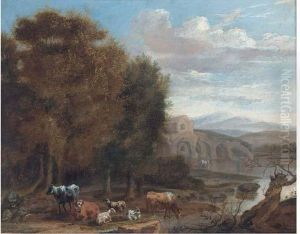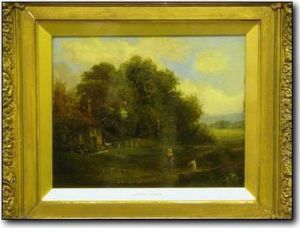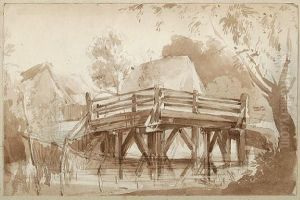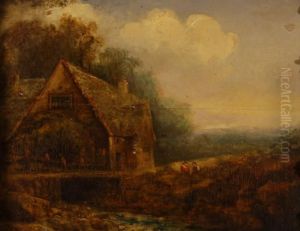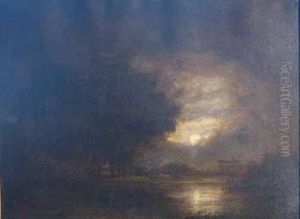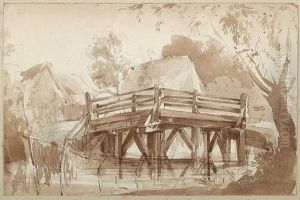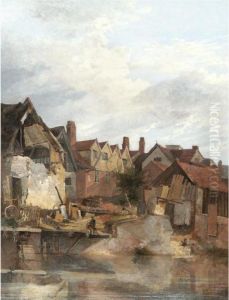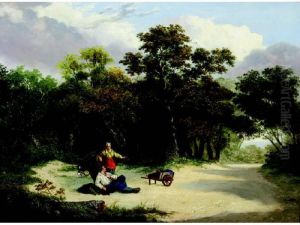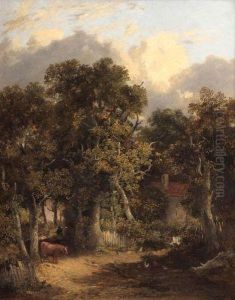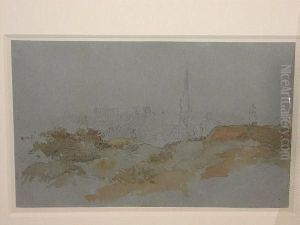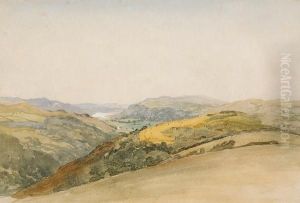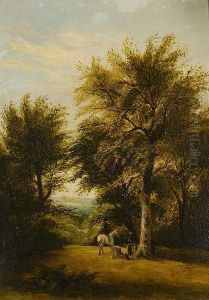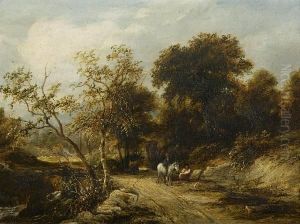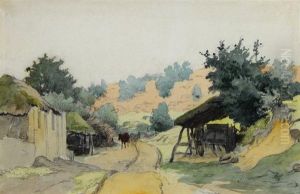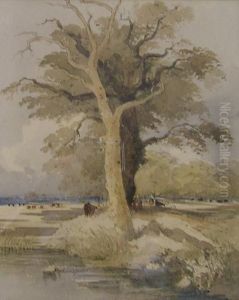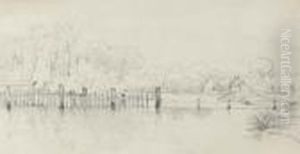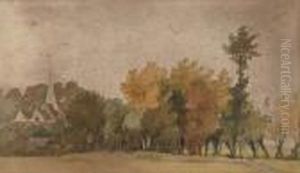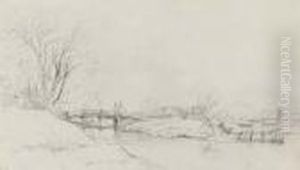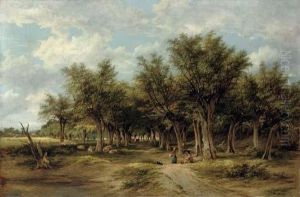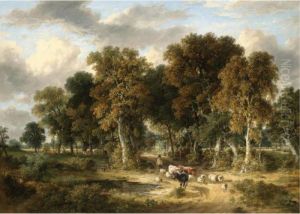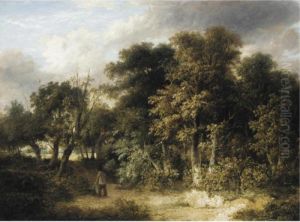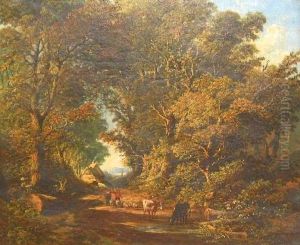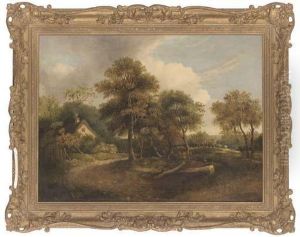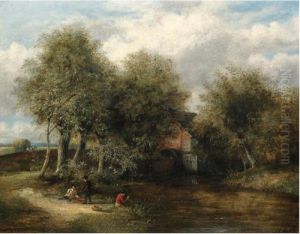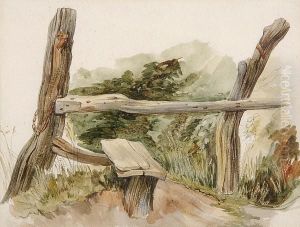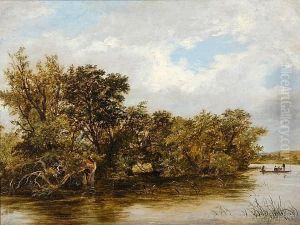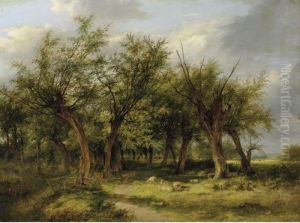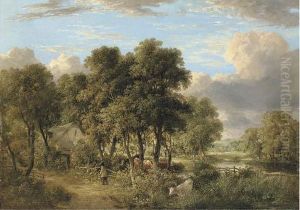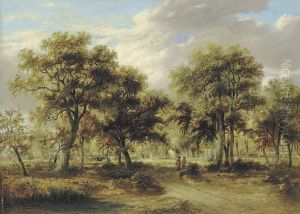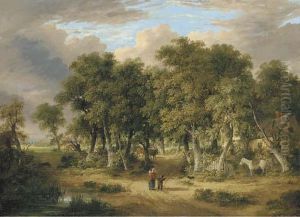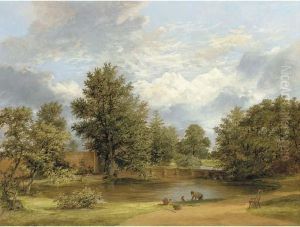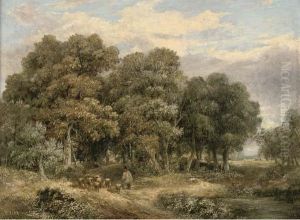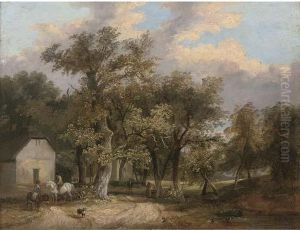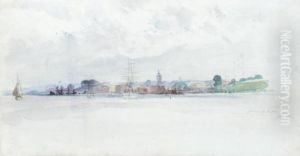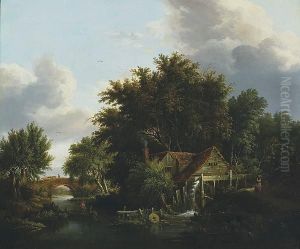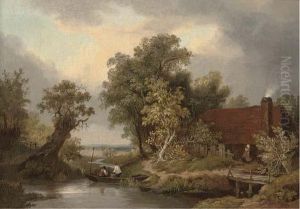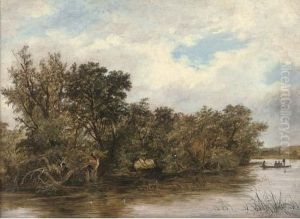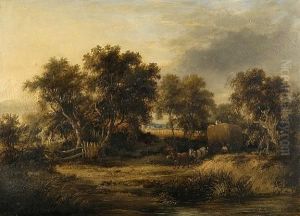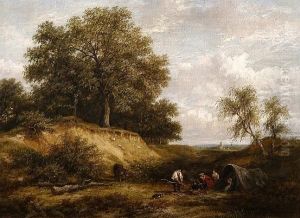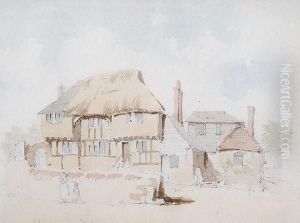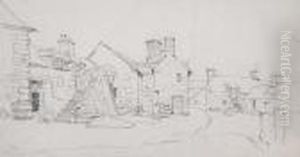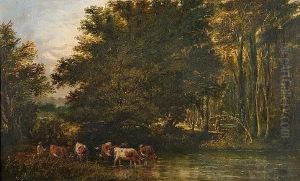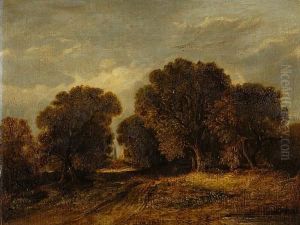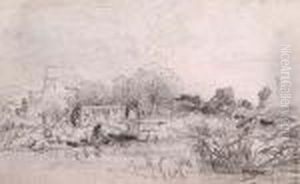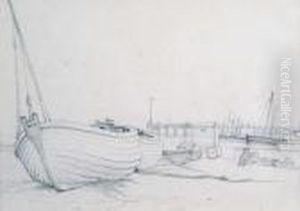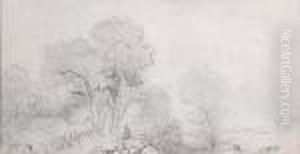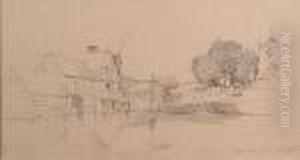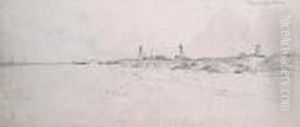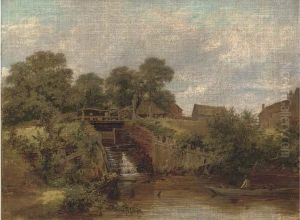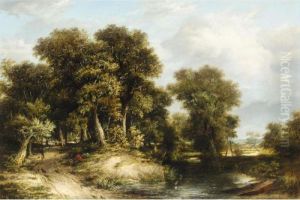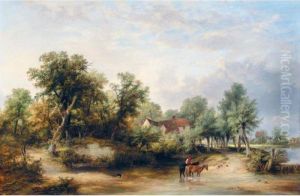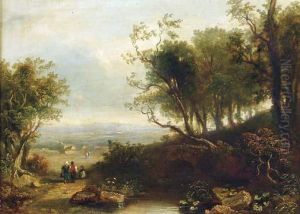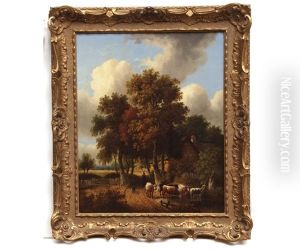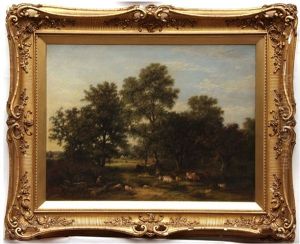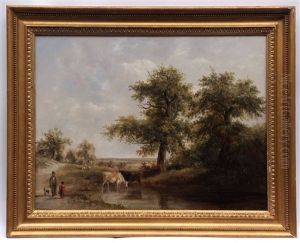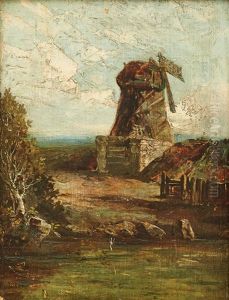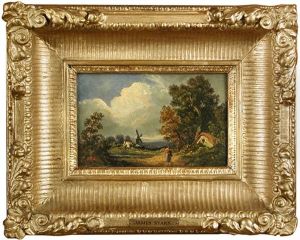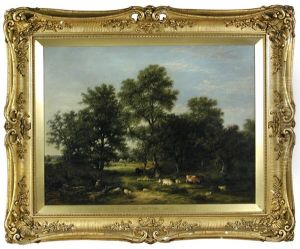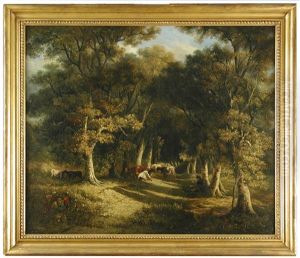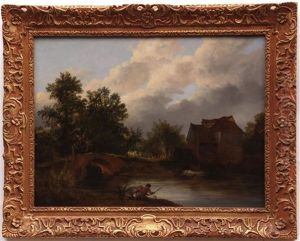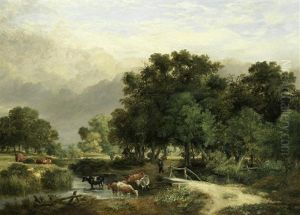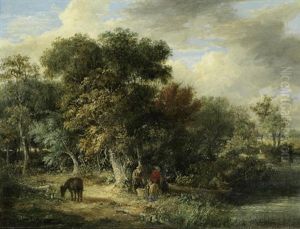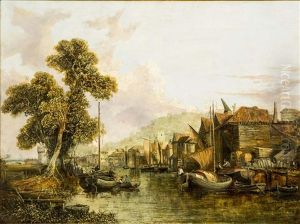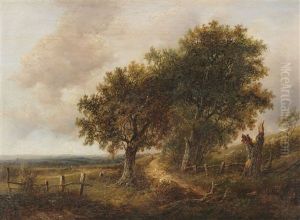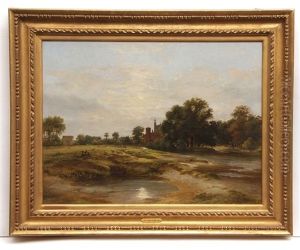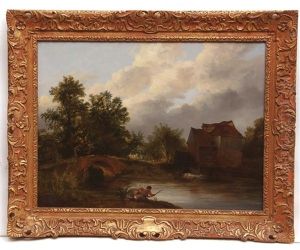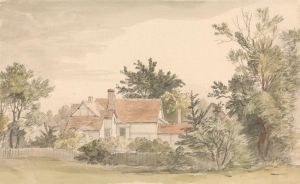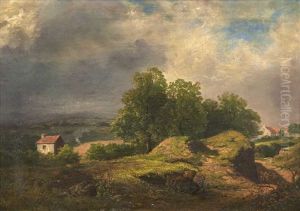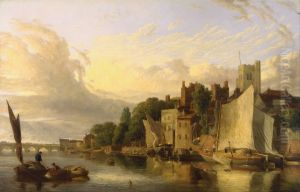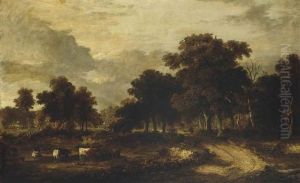James Stark Paintings
James Stark was an English painter who was born on November 19, 1794, in Norwich, England. He was one of the key figures in the Norwich School of painters, which was the first provincial art movement in Britain. Stark was particularly known for his landscape paintings that captured the countryside of Norfolk with a remarkable sense of realism and attention to detail.
Stark initially trained with his father, Michael Stark, who was a Scottish dyer and amateur artist. His early education was furthered at the Norwich Grammar School. Stark's artistic promise became evident early on, and in 1811, he was apprenticed to the landscape artist John Crome, who was a leading figure in the Norwich School and an important influence on Stark's work.
In 1817, Stark moved to London to further his studies at the Royal Academy Schools, where he exhibited his works and began to gain recognition. During his time in London, he was exposed to the works of the great landscape artists of the era, including John Constable and J.M.W. Turner, which influenced his approach to landscape painting.
Stark returned to Norwich in 1820 and became an important member of the Norwich Society of Artists. His paintings from this period are characterized by their fine detail, rich color, and serene composition, often depicting the rivers, mills, and woodlands of Norfolk. Stark's work was well-received, and he established a strong local patronage.
In 1830, Stark moved to Windsor, but he returned to Norwich in 1839, where he continued to paint and exhibit his works. He was also active in the local artistic community, contributing to the Norwich exhibitions and mentoring younger artists.
James Stark's health began to decline in the 1850s, and he eventually died on March 24, 1859, in London. Today, Stark's paintings are celebrated for their contribution to English landscape painting, and his works can be found in various public collections, including the Tate Gallery, the Victoria and Albert Museum, and the Norwich Castle Museum and Art Gallery. His legacy as part of the Norwich School continues to be acknowledged by art historians and enthusiasts.
